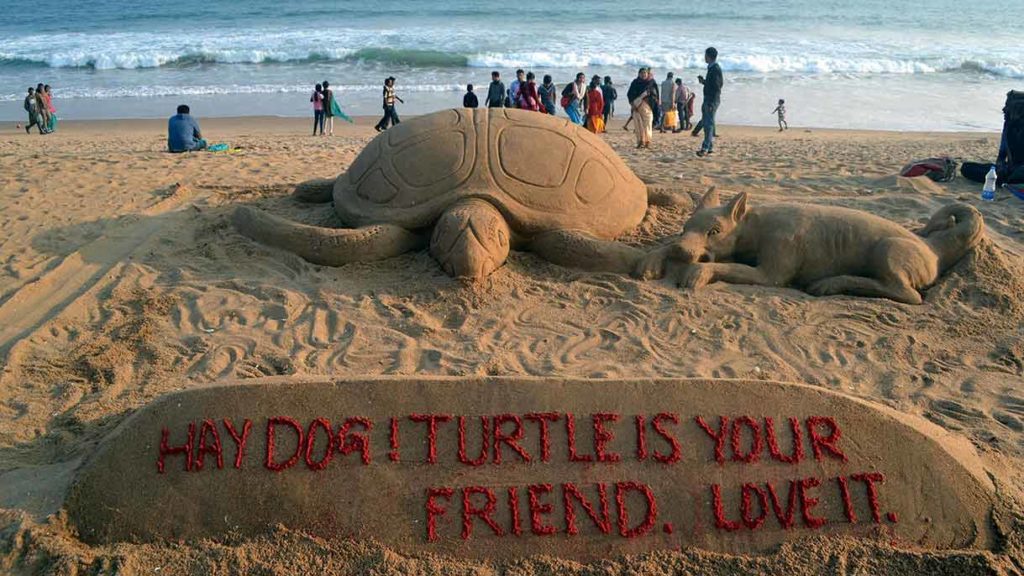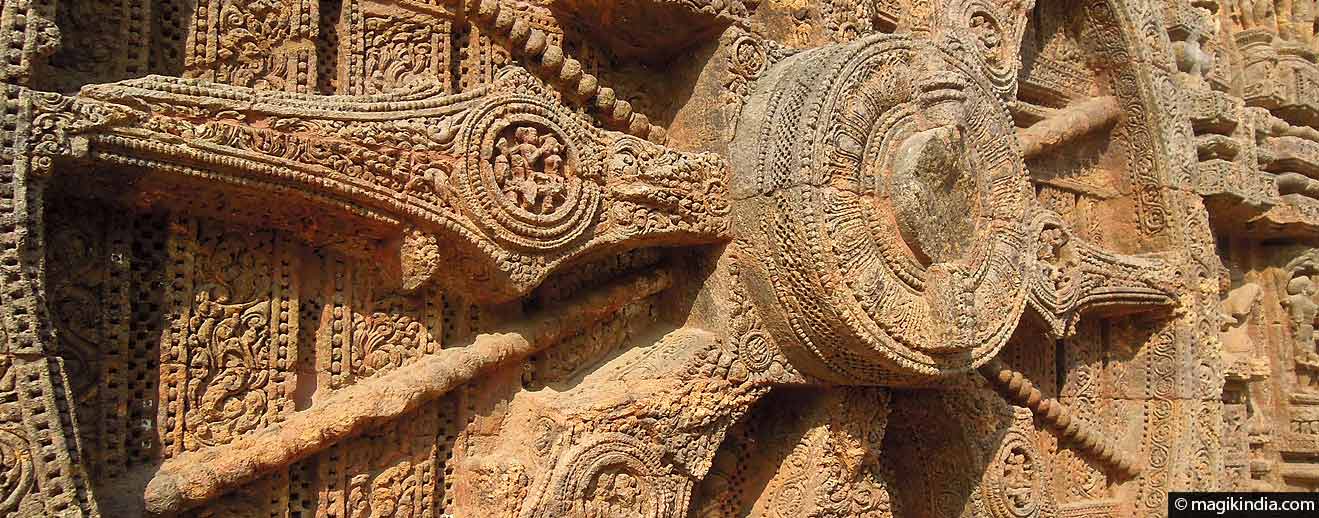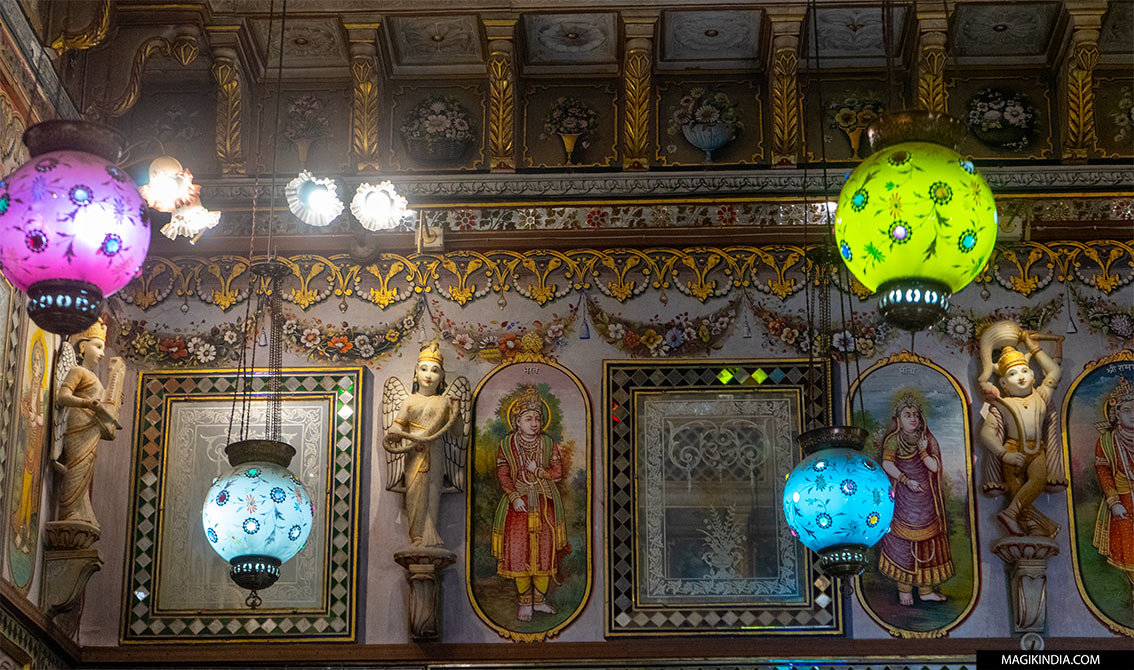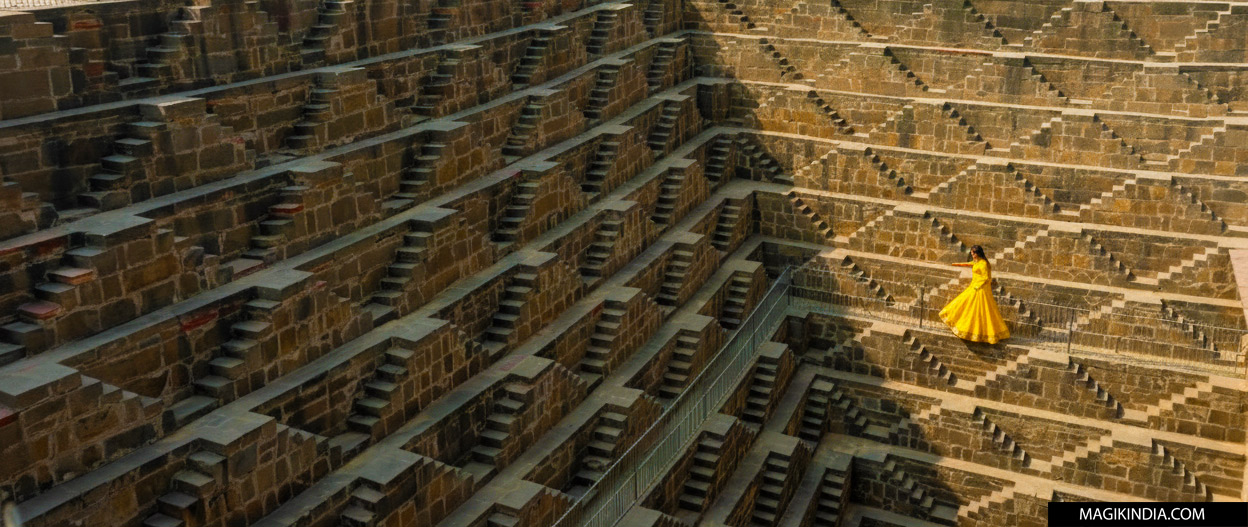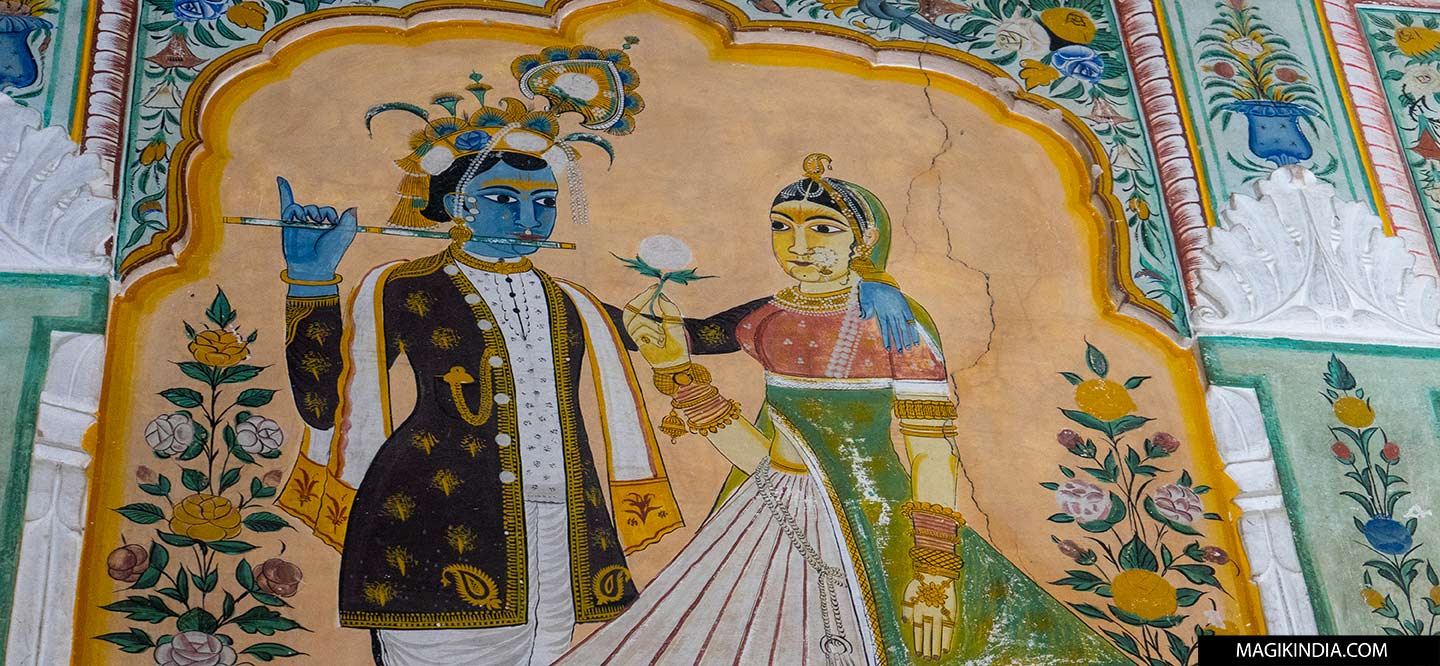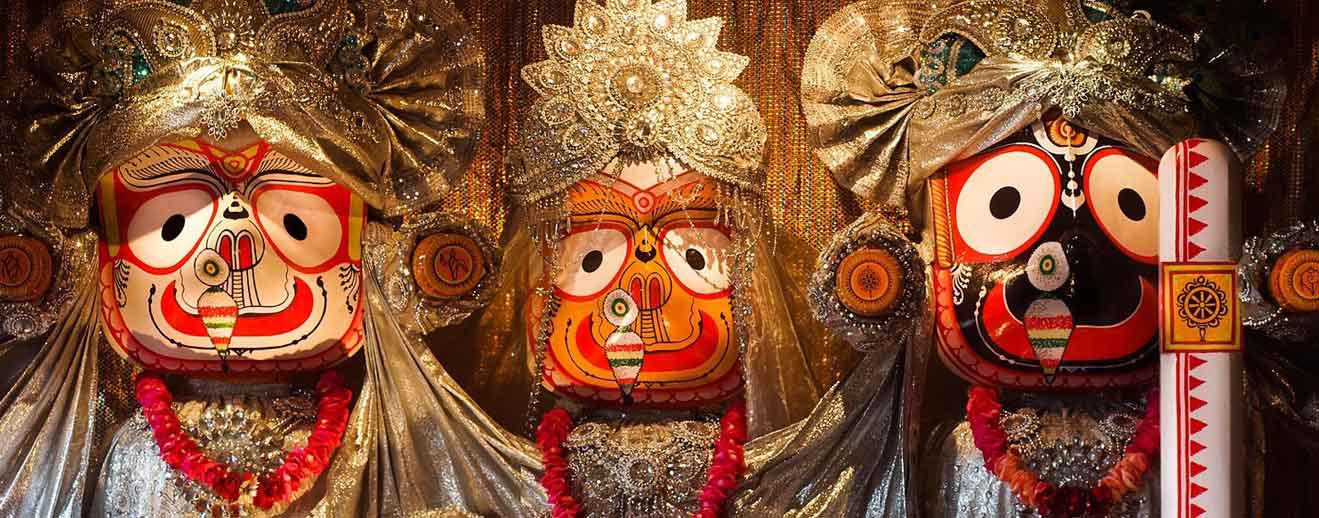
Puri, the abode of lord Jagannath
Puri, a major Hindu pilgrimage town, is the abode of residence of Jagannath, “lord of the universe”, one of the aspects of the god Vishnu or his avatar, Lord Krishna. The town is entirely dedicated to him. Puri is also one of the Char Dham, India’s four main pilgrimage centres. Devotion here reaches its peak at the Ratha Yatra (chariot festival).

Puri is a pious city. The visitors are usually Hindu devotees wishing to receive the blessings of Lord Jagannath.
However, the temple rules are very strict; entry is forbidden not only to non-Hindus but also to anyone without Indian ancestors. There have been some conflicts over this.
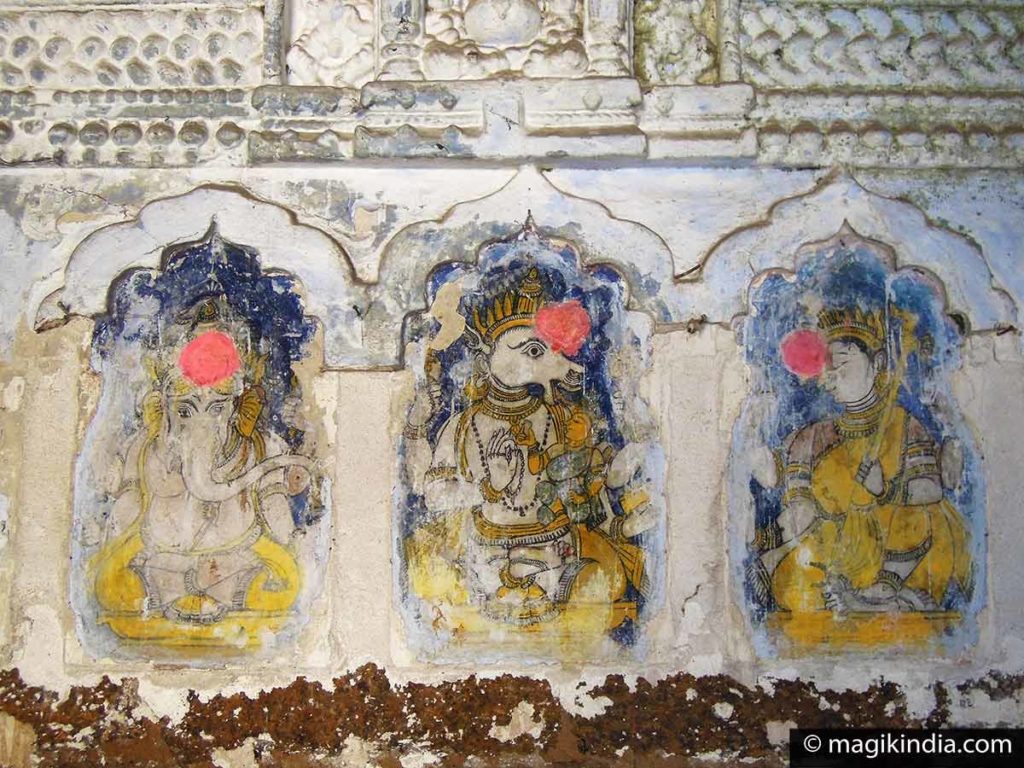
Until August 2019, the “Raghunanda library” offered a general view of the temple. However, this historic library has just been razed along with the 700-year-old Emar Mutt who would managed it.
The building, which was in very poor condition, was moved in order to preserve and digitize the ancient books, some of which are made of palm leaves.
If we salute the effort of conservation, we regret that the building itself was not renovated, it had a real charm on its own…
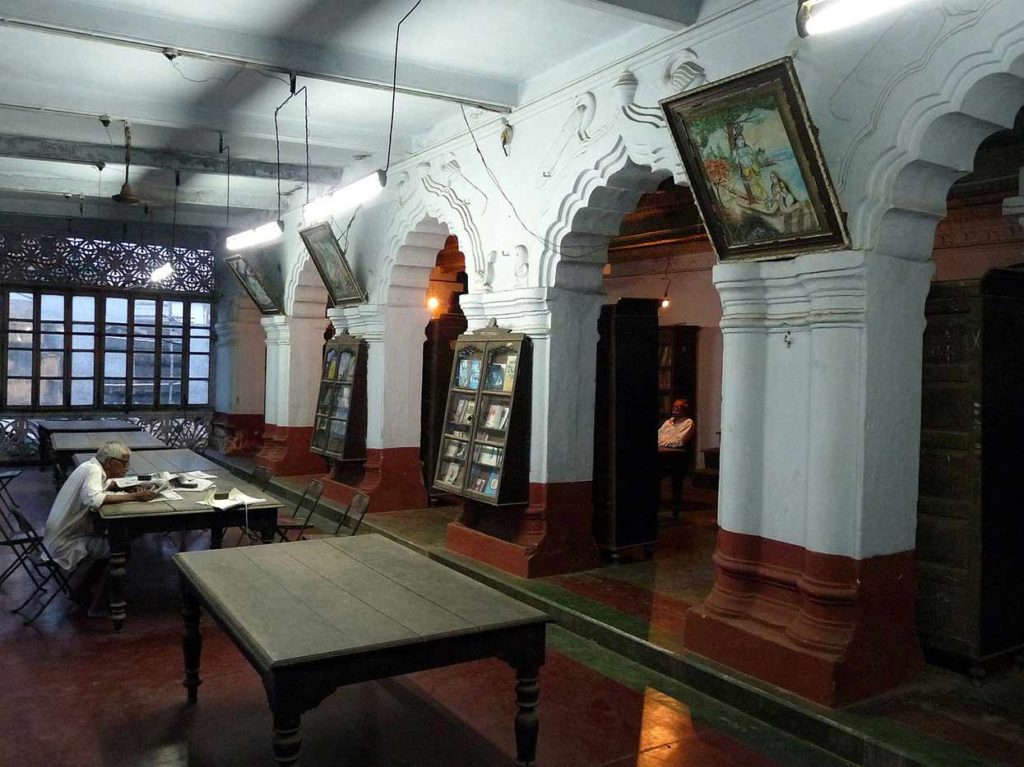
History of the temple
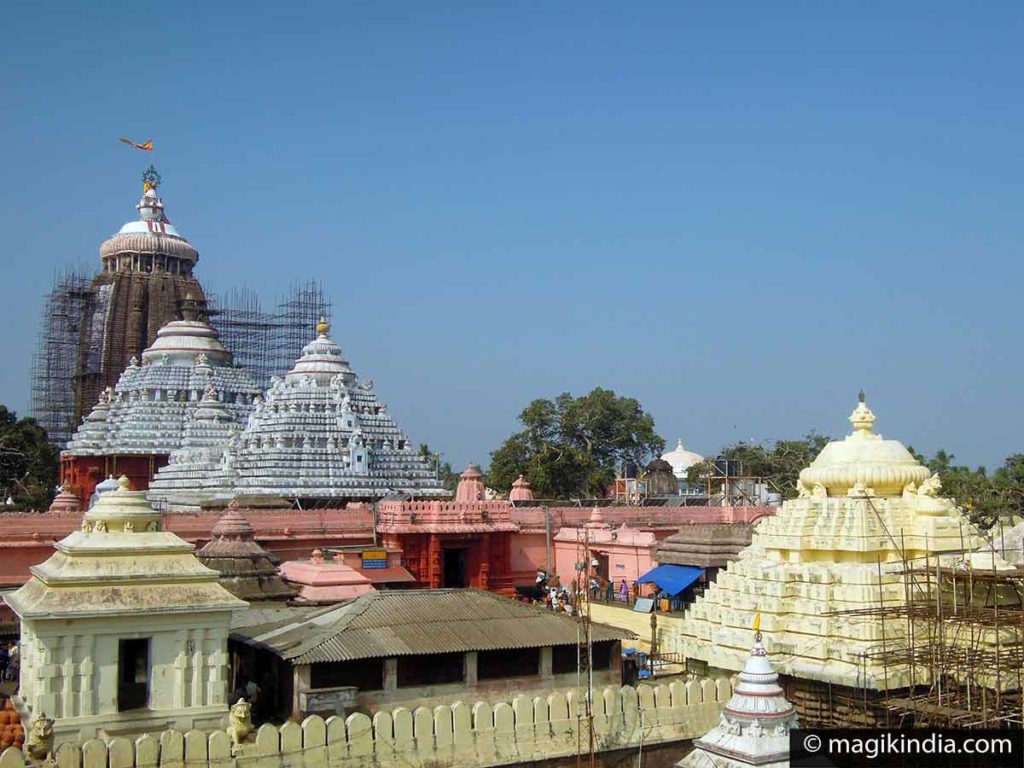
It is believed that the foundations of the Jagannath Temple were laid in the 10th century, when the place was called Purushottama. It was in the 12th century, during the reign of King Anantavarman Chodaganga Deva, the first of the Eastern Ganga dynasty, that the temple took shape. His successor Anangabheema, in the 13th century, brought the final touch by installing the deities.
During the Afghan and Mughal periods, the sanctuary suffered several attacks, but it was each time restored.
A treaty of non-interference in religious affairs was concluded during the British Raj, which once again saved the temple.

The particular deities of the temple of Puri
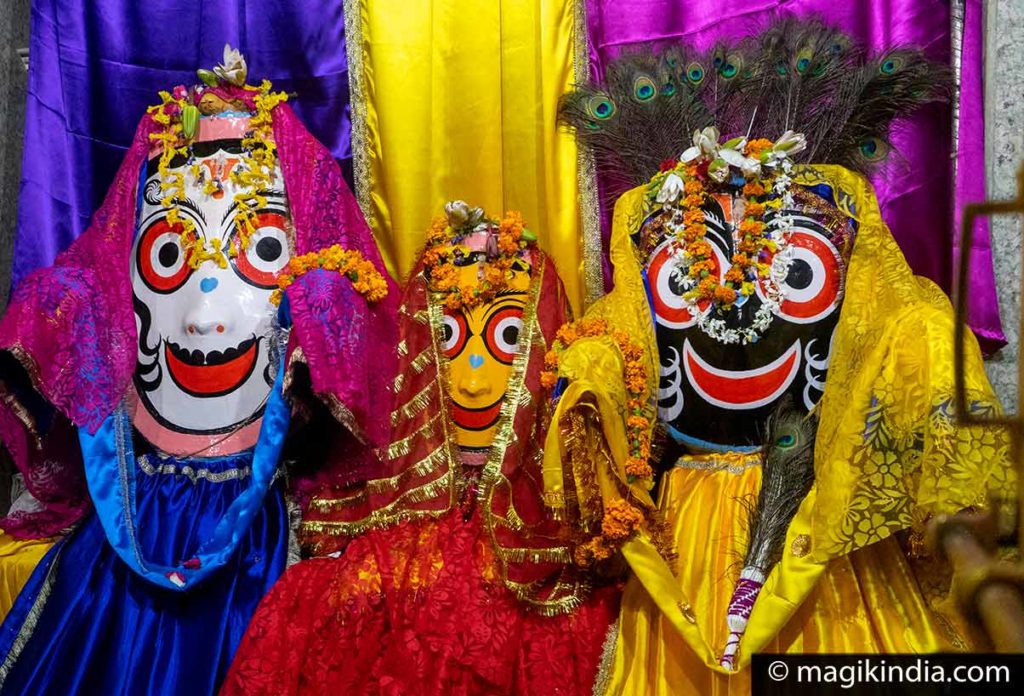
The sanctum sanctorum of the temple of Puri boasts three singular statues, those of Jagannatha, Balabhadra (his brother) and Subhadra (his sister).
These smiling idols with large round eyes are roughly carved from neem wood, considered sacred. In this, they are unique in India where the statues are generally made of metal or stone.
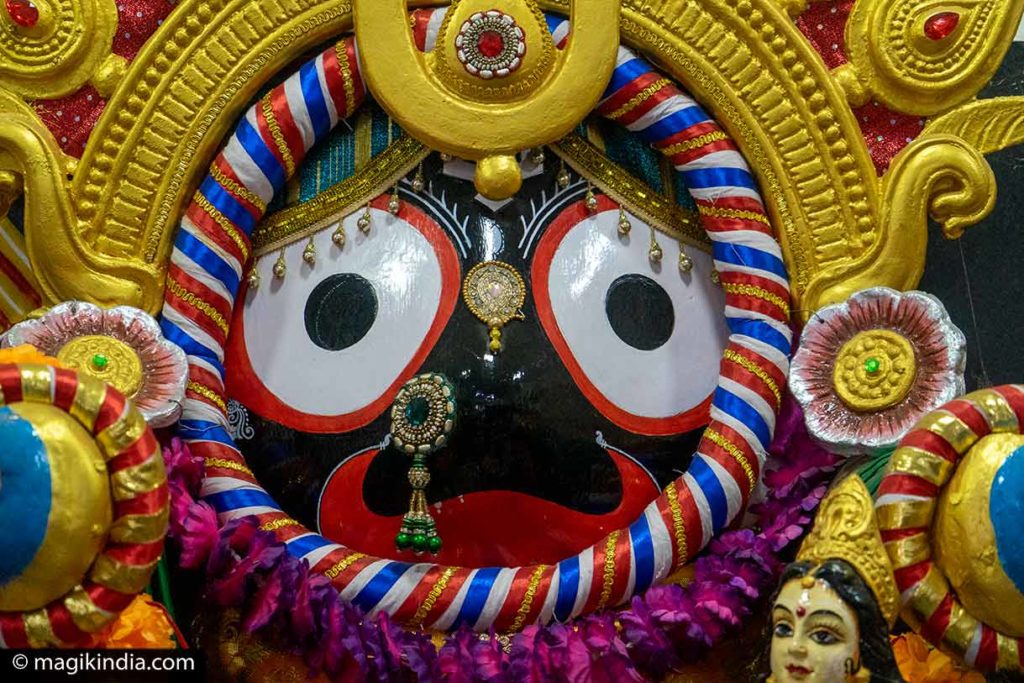
According to the legend, the statue of Jagannatha is a reliquary containing the bones of Lord Krishna, recovered after his cremation.
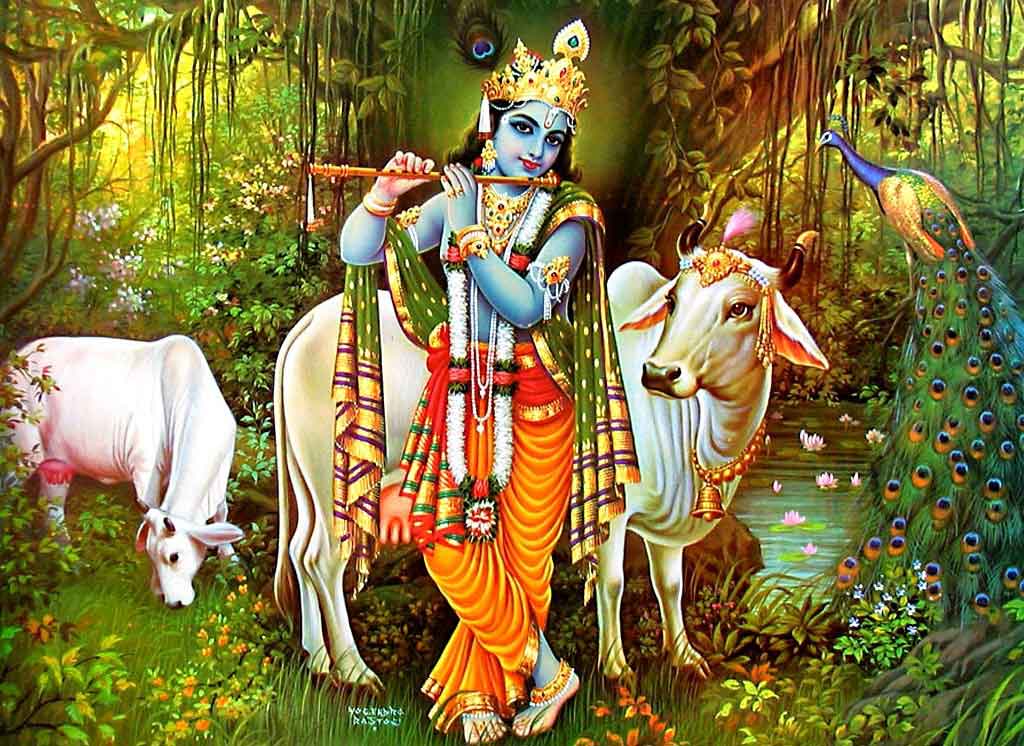
The origin of Jagannath worship, as well as iconography, is unclear and has been subject to intense debates. Some believe that animistic practices are the starting point of this cult.
Another specificity is that every twelfth year the statues of Jagannatha, Balabhadra and Subhadra are replaced with identical new ones, carved in a secret ceremony called Navakalevara (“new incarnation”). The lastest one took place in 2015.
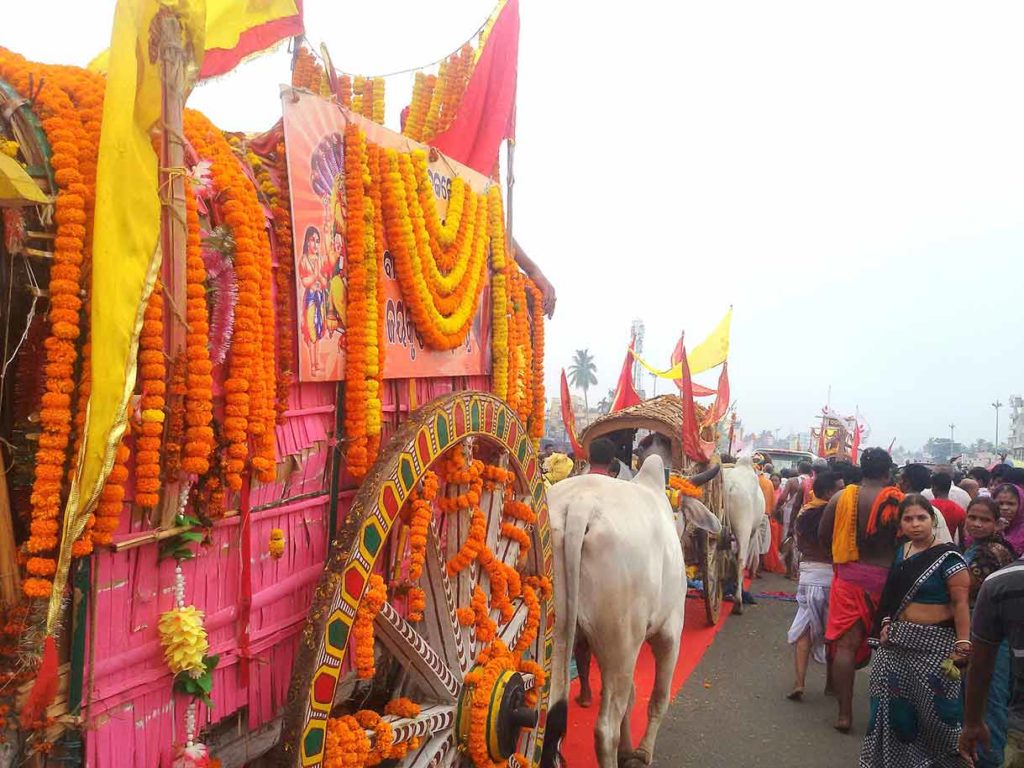
Khaja, Jagannath’s favorite delicacy
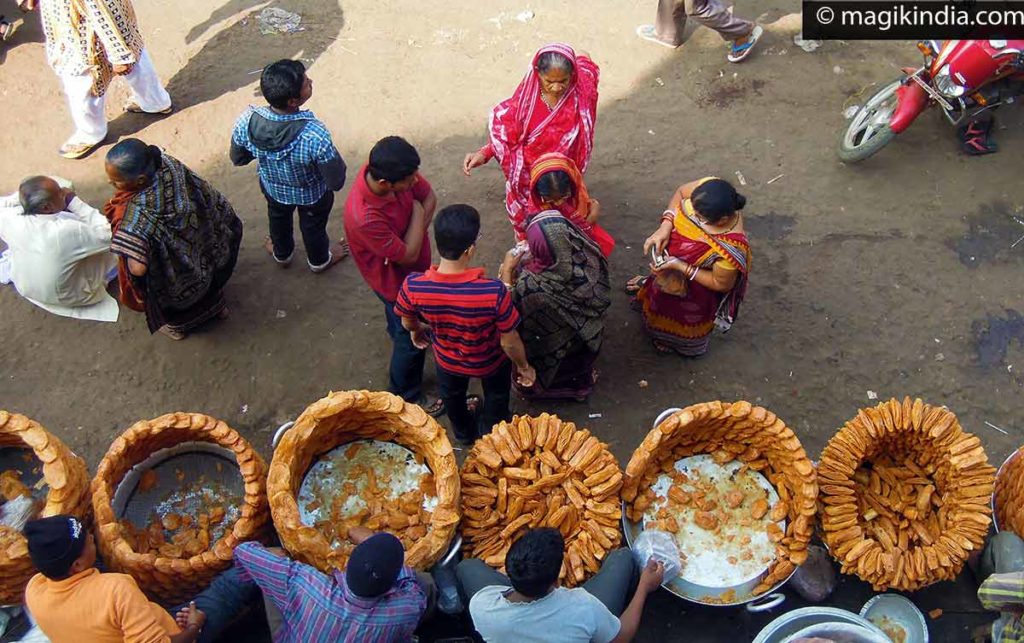
Near the entrance to Jagannath Temple, one cannot miss the stalls of Khaja, a famous pastry from Puri, also offered to the deities of the sanctuary.
They are made from wheat flour and then soaked in a sugar coating.
Legend has it that the Khajas were Jagannath’s favorite delicacy. He then appeared in a dream in front of a Muslim pastry chef to give him the precise khaja’s recipe. He also asked him to bring it to the temple the next day. The chef complied, but could not enter the temple because he was a Muslim.
An argument then ensues throughout the neighborhood. As the feud unfolded, a black dog suddenly arrived, took the khajas, and disappeared into the temple without anyone being able to stop it. They later learned that this dog was Vishnu himself and, seeing that the khajas were not conveyed to him, he transformed himself into an animal to get them faster.
Since that time, khajas have been offered as prasad (holy food) to the lord of Puri.
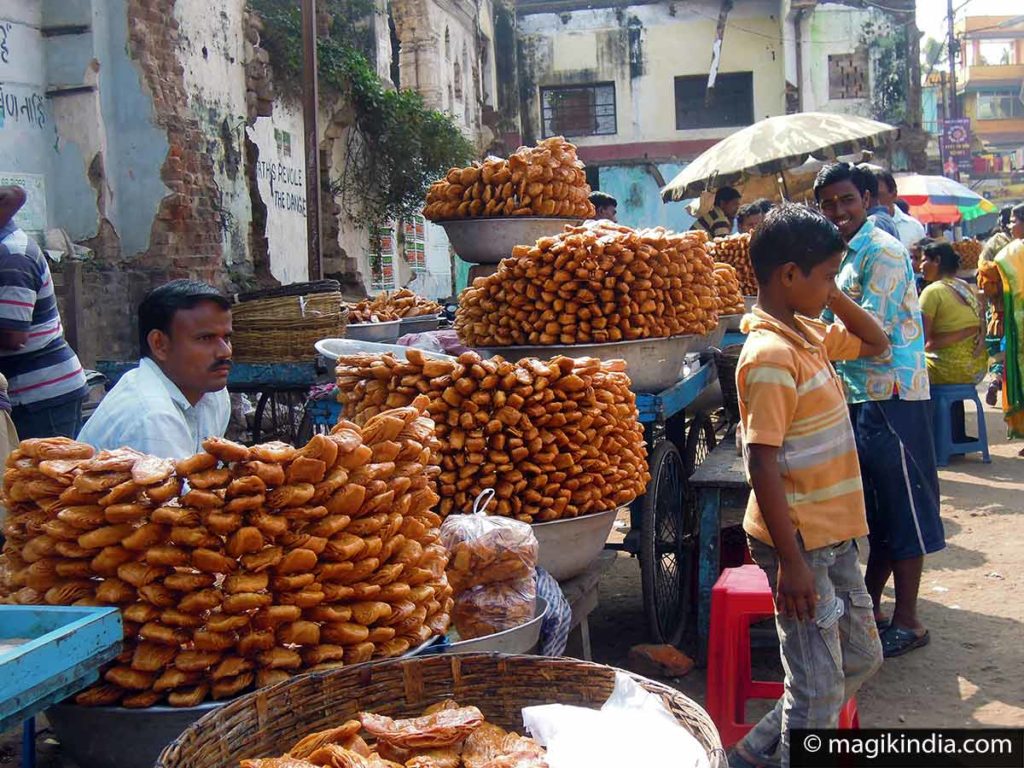
Rath Yatra festival
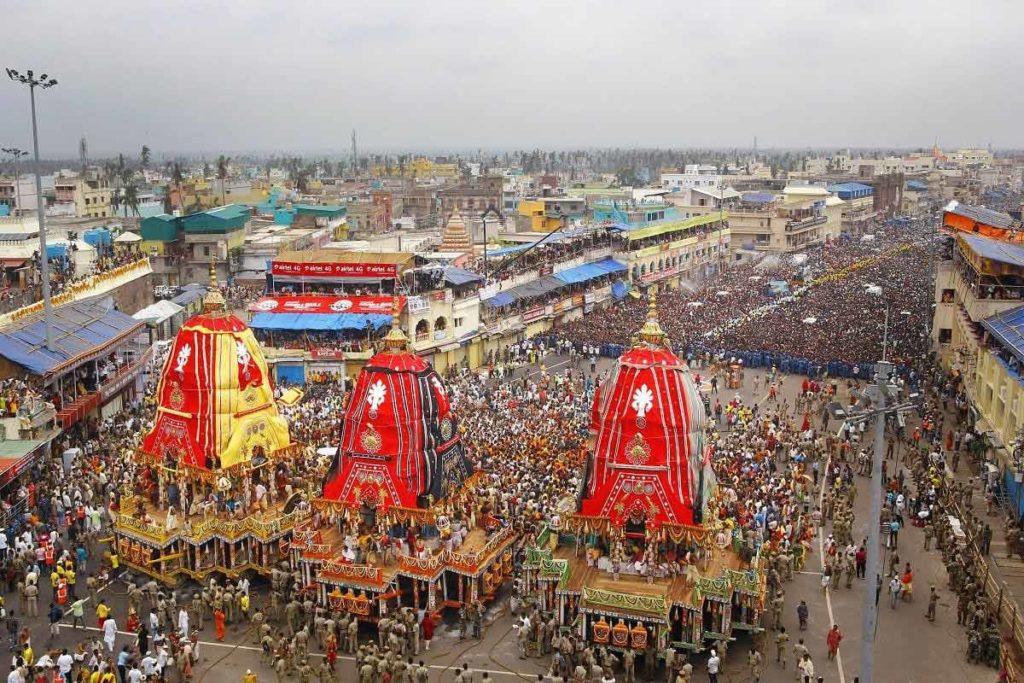
This annual festival is one of the biggest in India. It is celebrated on Ashadha Shukla Dwitiya (second day in bright fortnight of Ashadha month).It commemorates Jagannath’s annual visit to Gundicha Temple via Mausi Maa Temple (aunt’s home) near Balagandi Chaka, Puri.
As part of Ratha Yatra, the deities of Jagannath, Balabhadra and Subhadra are taken out in a procession in huge chariots to Gundicha temple and remain there for nine days. Then the deities or Ratha Yatra return to the Main temple. The return journey of Puri Jagannath Ratha Jatra is known as Bahuda Jatra.
The Rath Yatra also takes place at the same time in two other cities in India: Udaipur (Rajasthan) and Ahmedabad (Gujarat). Although less impressive in number of participants, these two cities in north-west India can gather tens of thousands of devotees.
[ Rath Yatra in Udaipur, Rajasthan ]
Around Puri
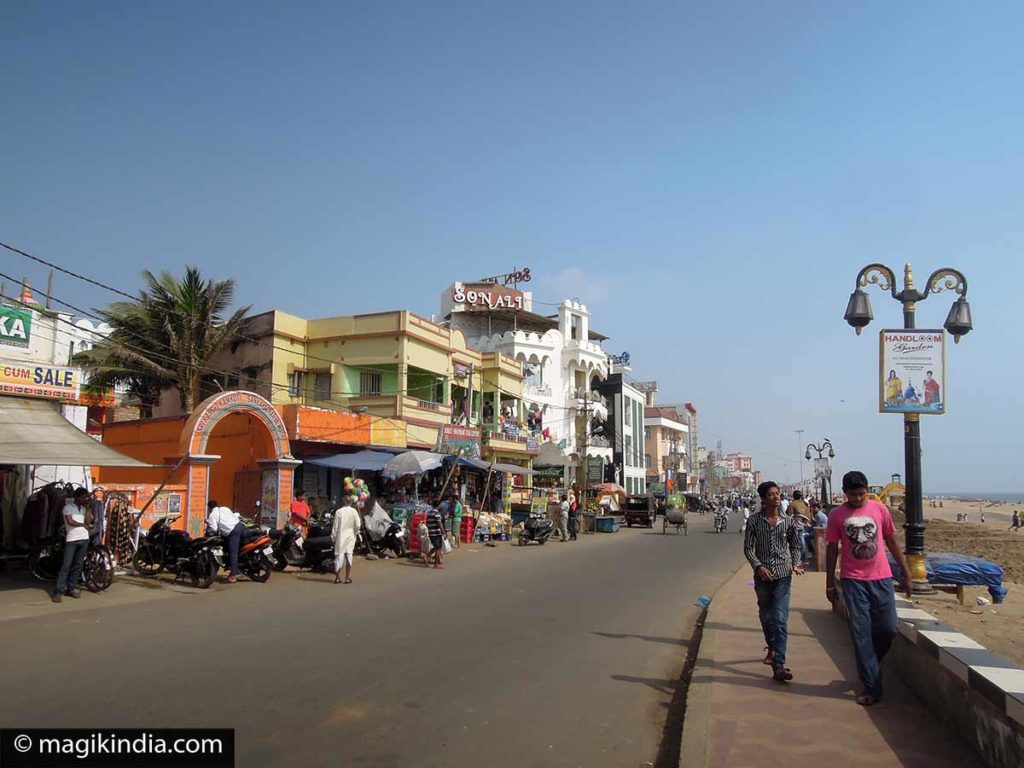
Before you leave Puri, it’s worth nipping down to Puri beach just for the seaside atmosphere, Indian style.
You may also attend the beach festival which, as its very name suggests, is held on a beautiful beach namely Sea Beach, Swargadwara at Puri.
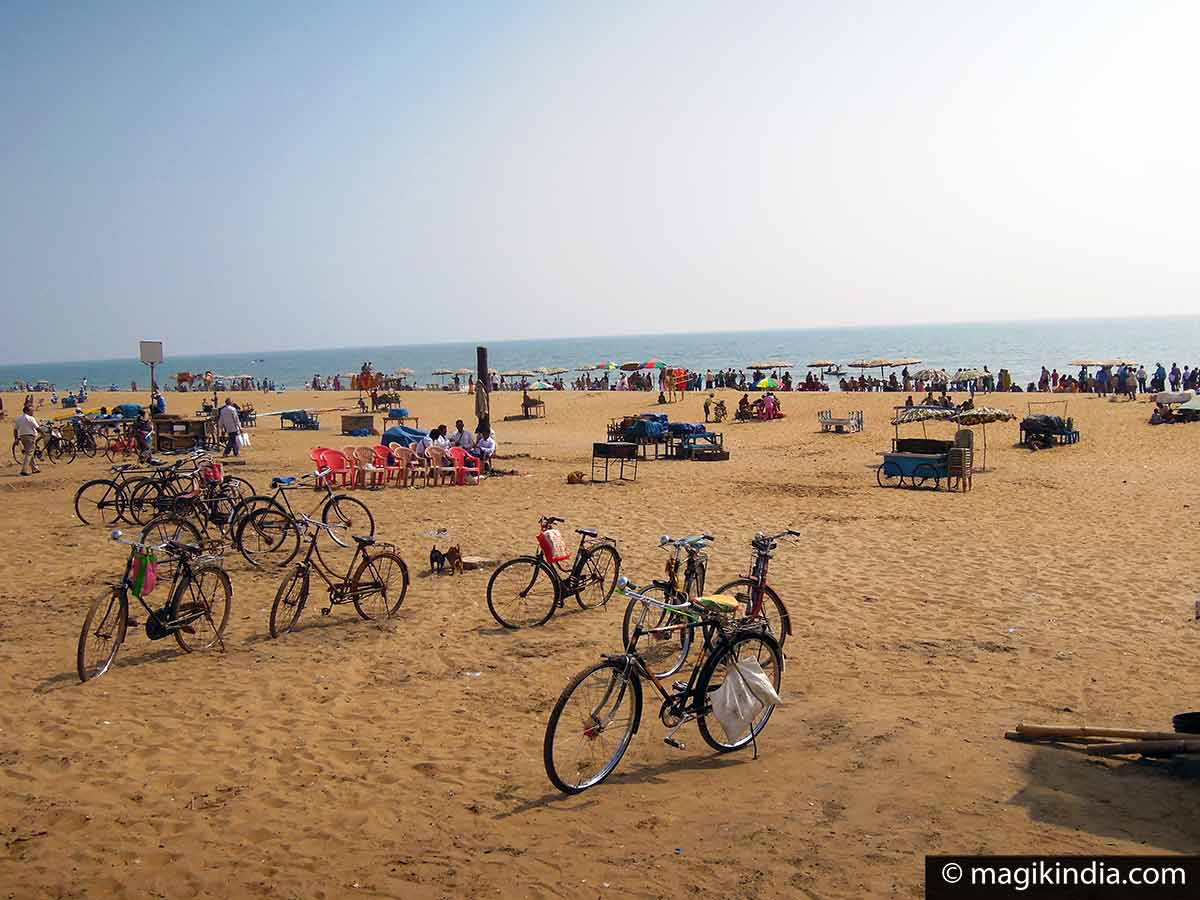
Being a festival of various classical and folk dances of India, this festival offers a unique opportunity to the visitors to interact with the local populace and enjoy the bountiful charms of Odisha (Orissa). The festival is also marked by an exhibition of Handicrafts, Handloom and Sand Art.
